Oil Leaks, Vintage Iron and Jim Beam: Moto Art from the Garage Floor
One of the benefits of working on NYC Motorcyclist is the people you get to talk to, either at moto events or online through social media. Meet Taryn Nycek -- in no particular order, a vintage motorcycle collector and enthusiast, antique camera buff, artist and mechanic. The 28-year-old self-described ‘old soul’ is currently blending her interests in Connecticut with a new moto-inspired artwork series titled 'A Leak Can Speak', which pairs painted motorcycle logos with oil leaks from the bikes she works on, tire tread marks, and even a hint of Jim Bean. Intrigued? Then read on …
1) Firstly, thank you for taking time to talk to us. Tell us a bit about yourself … your IG profile states that you repair and collect motorcycles.
Yea, it’s been maybe eight or so years since I started venturing out looking for old motorcycles that needed a new home and a lot of work. I hate seeing these old relics rot no matter their history, rarity or down-the-road value. Since the start it really has been about bringing life back to these rides and trying to keep them on the road. Growing up around my dad, who is an engineer with a side passion for repairing and collecting antique cars, that environment I was surrounded by, and certainly not forced into, fueled my interest in vintage machinery. His grandfather was a participant in early Connecticut hill-climb events with rough riding Harleys and Indians. So, it seems the obsession skipped a generation and hit me hard. I think I was 20 or so when I hesitantly brought home my first moto project, a 1965 Honda Dream 305 CA77. For years I had threatened to bring home a motorcycle and I was finally doing it, this one I had found in Manchester, CT. I think my parents knew it would happen eventually and once my mind is set, I admit, I’m a stubborn pain in the ass. Their reaction was cool and calm and I was pissed, hoping to rile things up a bit just for fun – but, nope … all I got was damn support, ha ha.
2) What collector bikes do you currently have in your own stable? I even saw that Brough Superior is included in your art series?
At the moment my collection consists of the following:
1958 BMW R50/2 500
1961 Honda CM72E 250 (shipped over by a GI during Vietnam)
1964 Jawa 250
1964 Triumph T100SC 500
1965 Honda CB450 'Black Bomber'
1965 Honda CB160
1965 Honda Dream 305 CA77
1966 Ducati Scrambler 250
1966 Honda Dream CA160
1966 Moto Guzzi Stornello 125 (this one was yard art – turned into décor in my home bar)
1969 Honda CB175
1970 Harley Aermacchi SS350
1970 BSA Starfire B25 250
1973 Jawa Californian 250
1976 Triumph Bonneville 750 T140V
No Brough Superior in the collection! I wish! That painting was just one of the additions to my A Leak Can Speak series. As far as a favorite goes … whatever wants to start and run the day I want to go out and about. My most reliable has been the ’76 Triumph Bonneville 750, but the ’66 Ducati, ’65 Honda CB450 Bomber and ’58 BMW all fall equally into second place. No matter what I’m riding though I always carry a backpack with a socket wrench, extra sparkplugs, wire brush and a flashlight.
3) How long have you been riding and what’s your current go-to ride?
I had been working on motorcycles a few years prior to getting my endorsement. It made the three-day written and riding test much easier. I live in a very rural area so test riding bikes was never an issue with neighbors or authority figures. No one really looked twice until I started experimenting with straight pipes. Anyway, I think I’ve been legally riding for six years, which is absolutely nothing and there is always more to learn when it comes to safety on two wheels around traffic. My go-to ride – we’ll just say my 1976 Triumph Bonneville 750 T140V.
4) When and how were you first inspired to create artwork out of your passion for motorcycles?
I attended both the University of Connecticut and Southern Connecticut State University. I never graduated, but I put in my four years and just couldn’t stand the thought of another day of conformity and potentially having a stable career. I was enrolled in the art program and studied a lot of everything – photography, painting, ceramics, graphic design, etc. I dropped out and took what I knew from those courses and applied them to shit I was doing in my garage. I’ve done my share of realistic oil paintings, but I hit a point where I couldn’t station myself in a studio and focus on fine detail anymore. I was introduced to Instagram about three years ago (late bloomer, I know) and saw all this killer motorcycle artwork by various talents worldwide. Many artists were mentioning they’re open to doing commissioned drawings of your motorcycle and others were painting bikes in different mediums, but nonetheless it was all motorcycle artwork based around the actual form of a bike. Obviously, that makes sense. How else are you going to represent motorcycle artwork? But, just about a year ago I was looking at my garage walls and thinking how bare they were and was hoping I hadn’t lost my artistic touch. So, I decided to test out an idea … which brought me to my latest series.
Triumph inspirations — Taryn Nycek
Since the start it really has been about bringing life back to these rides and trying to keep them on the road. Growing up around my dad, who is an engineer with a side passion for repairing and collecting antique cars, that environment I was surrounded by, and certainly not forced into, fueled my interest in vintage machinery.
5) Tell us about the origins of the A Leak Can Speak series. The name is obviously a hint at the oil leaks predominant in classic bikes, that you use in the pieces. What bikes have been represented?
As hard as one tries to stop a bike from leaking, it’s always going to leave a few spots behind. And these bikes I find will leak anything they can when they’re initially resurrected. Most commonly – oil. It doesn’t matter the make …*ahem* Triumph … but some are better at making art than others. I love the Triumphs I own, but I know their reputation. Fortunately and unfortunately you get the days where nothing wants to leak and only someone like myself would be pissed about that. So in that scenario you get creative and start using these canvases as rags that collect Loctite, Marvel Mystery Oil spatter and shoeprints. Basically, I like to be able to look back at these finished canvases and think about the process I went through to get that bike running. Ya know, like when you’re trying to figure out if your oil pump is shot and you remove the front cylinder head cover only to get sprayed with oil – it’s a feeling of relief knowing the pump isn’t an issue – it’s also an exciting moment to grab one of the canvases and catch that spray before shutting down the bike. What I like most about this series is I can physically see the finished bike in front of me and then look up above it and see the canvas that caught every stain, tire track, shoeprint, coffee cup outline that aided in the revival of another vintage bike.
So far I have done about 25 canvases. I constantly jot down new brands to represent. I’ve done Triumph, Harley Davidson 1, Ducati, Honda, BSA, BMW, Husqvarna, Laverda, Jawa, Matchless, Brough Superior, Indian – some makes have been painted twice due to requests. Plenty more bikes logos in the works.
6) Take us through how you create a piece from elements used through the process including construction of the frames. Each one of these frames and “paintings” is different, made one at a time in a backyard garage?
The process and materials are pretty cool, at least to me. I buy raw canvas online and keep the frayed edges. I don’t prep it with gesso, stretch it or iron it. I leave pieces underneath my bikes and let them drip, I use them as drop clothes while working on my bikes, I make sure they get good and used especially during oil changes. I’ll ride over them with various vintage motorcycles I have as well. I then follow the guideline of any ol’ moto logo and complete it with Rustoleum paint. I wrap up the piece with a custom, handmade steel frame. The frames are cool. I’ve done a couple different styles just trying to figure out the best look ... welded corners, to plasma cutting the center and bending edges. I place the finished canvas on a piece of masonite board and use spray adhesive, so it won’t wrinkle if placed in an average garage. I then drill a few holes through the steel and masonite, add some wire hanger and that’s about it. So everything is hand done in my garage/studio. I can’t take credit for the design, being that they’re established logos, but I do outline and paint them myself. Each canvas is unique … no two are alike, just like a snowflake, but a lot less pretty.
7) I’ve also read that whisky also plays a role in the process … as a brush cleaner? Please tell me it’s the cheap stuff 😊
Ha ha, that is indeed true. For years I have been using a typical art supply store brush cleaner. However, one evening when I was painting and ran out I looked around me for a quick substitute and zeroed in on a bottle of Jim Beam whiskey. My curiosity was sparked. I poured a shot of the Jim Beam, swished the blackened brush around in it and off came the Rustoleum paint. Now, this was a bottle from 1971 - compliments of my late grandparents basement liquor cabinet clean-out ... so was it due to potency, I don’t know … but, it works and adds a fantastic subtle scent to the finished canvas.
8) Any preference in oil brand/type and tires for the bikes and canvases?
Nope, I don’t have a preference in oil or tires. I use whatever my shop down the street has in bulk, haha - typically its Wolf’s Head. The couple Jawa 250 two strokes I have get Golden Spectro. The tires vary – Continental, Pirelli, Dunlop, Michelin, Shinko, etc. Sometimes if a bike project I grab isn’t worth putting new tires on, but the ones it came with aren’t reliable enough … I’ll just buy some new tubes and check around for old, used tires in slightly better condition. Is it the best and safest way to go? Hell no. Does it make the bike look better and keep me alive a little longer? So far, yea. On the canvases though, you’ll notice I ride a knobby tire over them more often than a road tire. It’s just for visual preference.
1960s Polaroid Land Camera — Taryn Nycek
As hard as one tries to stop a bike from leaking, it’s always going to leave a few spots behind. And these bikes I find will leak anything they can when they’re initially resurrected. Most commonly – oil. It doesn’t matter the make …*ahem* Triumph … but some are better at making art than others.
9) I see in the past you have offered buyers progress photos of their works, taken with your 1960s Polaroid Land Camera … how is it finding film for that antique?
I have a shelf in my studio with a collection of vintage cameras. I couldn’t remember how well this old PLC was working, so I shot an image of my Brough Superior painting while it was a work in progress. To my surprise the black and white film was still good and it captured a pretty decent photo. This camera, along with several of the others, was acquired from my grandparents. I didn’t go out looking for a 1960s Polaroid because I knew finding film wouldn’t be quick, fun or inexpensive. Of course after shooting with it I had to go online and see what was available for film. It’s been using FujiFilm FP-100C (color) and FP-3000B (black and white). As expected, it isn’t cheap; however, it was readily available on numerous sites. The going price for a pack of ten prints has ranged from $45 to $115 … so needless to say I won’t be blowing through this film on canvas progress shots, ha ha. The Brough Superior canvas was the first time I had offered a photo with the purchase of a painting, but that probably won’t be happening all too often due to the cost of film for this particular camera.
10) How can a buyer see your work and purchase a piece?.
I post most of my finished pieces on my Instagram page: @nycekt. So far that’s been the most successful. Interested buyers can send me direct messages and use PayPal. I also created an Etsy account, but I have to mark up the price on that site due to monthly fees per item and a final amount they take from any sale. I’ve considered the idea of opening up my garage for viewing/purchasing, but my Connecticut location is way off the beaten path. My Newport, RI residence may be where I try my hand at an open studio event for this series, but the bummer there is I don’t keep any bikes at that location. If you’re going to make the trek to see some funky moto art – you probably want to see some funky motos around it.
11) What is the average size of a piece, and is there a price range?
The sizes vary – usually they’re uncommon dimensions because of the way I cut the 12x12 foot canvas I start with. I like to get as much out of one square as possible. Some finished pieces include 12x18 in. / 24x24 in. / 2x4 ft. / 13x26 in. – etc. Pricing depends strictly on materials and labor – canvas, paint, steel, clear-coat, spray adhesive, masonite and of course time. For now most everything ranges from $175 to $275, plus shipping.
12) At 28 you definitely seem to stray towards vintage hobbies … would you describe yourself as an ‘old’ soul?
As I sit here typing this, I’m glancing around looking at my posters of Marlon Brando, Steve McQueen, Paul Newman, vinyl records, Rolling Stones memorabilia, antique guitars and other shit you wouldn’t normally find surrounding a 28 year-old. I’ve always felt like an old soul. For years people have brought that to my attention. It’s difficult at times, especially socially, because I can’t find many folks my age with similar interests or ones who care that hands-on work like carpentry or metal-working is still so important. So conversation basically ceases after I list off my hobbies. You’d be surprised how many people have dropped their jaw when they hear I still go to Barnes & Noble for reading material versus using a Kindle or some shit like that. Over the years I’ve definitely learned to accept it. It’s just who I am.
Triumph in the rough — Taryn Nycek
Honestly, it’s pretty cool being a young woman in the vintage community. The more unique you are, the more you stand out, the better chance at success you have.
13) On your IG you state “Based off the motorcycles I repair/collect you'd think I was an 85-year-old dude. Sorry to disappoint, but I'm a 28-year-old non-dude.” Is this based off of reactions to your work and your hobbies? How is it as a young woman in the vintage world?
Ha ha, yea so initially on Instagram I just had my name posted with no bio or ‘selfie’, and then you see all these images of vintage motorcycle projects. My name is apparently neutral these days with genders so had my parents chosen to make me an ‘Amy’ or ‘Heather’ then my current IG bio would probably be a little different. I get a lot of positive feedback from people who actually follow my stuff, bless their hearts, but so many were making the assumption I was male based off my motorcycle work. Or even just posts about me taking out my 1959 Ford Thunderbird. I don’t blame them either. The vintage motorcycle scene is predominately male. Honestly, it’s pretty cool being a young woman in the vintage community. The more unique you are, the more you stand out, the better chance at success you have.
14) What’s next for you in terms of moto art?
No idea. I think for now since this series is still so new to me, I’ll just focus on frame design. I can’t really change up my choice of canvas considering oil doesn’t get absorbed by much else. I’ll likely keep doing what I’m doing and see how it goes. It’s just another hobby for me so I don’t want to dive too deep into it – I still have more fun finding, repairing and collecting motorcycles and that’s for sure an art in itself.
15) Do you have your eye on any new vintage moto acquisitions?
Totally perfect timing for this question …
The other night my friend Larry Morris, AHMRA racer and overall awesome human being, contacted me saying he was driving cross country to the East Coast from his place in Venice, CA. He wanted to know if I’d be interested in purchasing his 1970 BSA Starfire B25 250 that I rode while out there this past spring. My reply was, absolutely. He’s currently in route (as of 10/30), and will hopefully be arriving with my latest addition sometime between 11/4 to 11/8.
How I met Larry was kind of an interesting experience. Since I’ve already talked up a novel and a half I may as well share the story … I was using AirBnB for the first time in May and wanted a Venice, CA location for a week or so before staying with relatives in Long Beach. I had viewed a house that seemed like the ideal spot, but the best part was the owner’s introduction. He mentioned being a vintage motorcycle enthusiast/racer and that he loved welcoming interesting travelers and sharing his moto collection. At that point my attention was less on the house and more on the host. Upon arrival he had his doors wide open with a pretty killer collection of anything and everything vintage moto related. It was like I never left home … except for the warm weather and palm trees. Larry was prepping for The Californian Moto Show in Santa Anita, CA and I couldn’t help but get involved. He was moving bikes, loading stuff up and when I hear swearing and metal clanging – it’s like the Batman signal for me. I must help.
He successfully made it to the show in his Airstream with the NYC Motorcycles trailer attached – filled with two glorious Laverdas. The event was a surreal experience, being surrounded by priceless bikes, cars, and an eclectic crowd since it was also the Kentucky Derby and the show was hosted at the horse track. The following morning Larry invited me to breakfast to talk about anything and everything – so he hopped on his Harley Davidson XR750 and tossed me some gloves, a helmet and designated me to the ’70 BSA I mentioned. It’s a rad little bike with so much history and so many stories … how could I pass up adding that to my collection?
That seems like a great place to end off. We look forward to hearing more from you in the future. Thanks for taking time out to share with us.

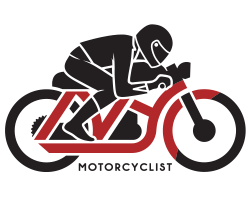

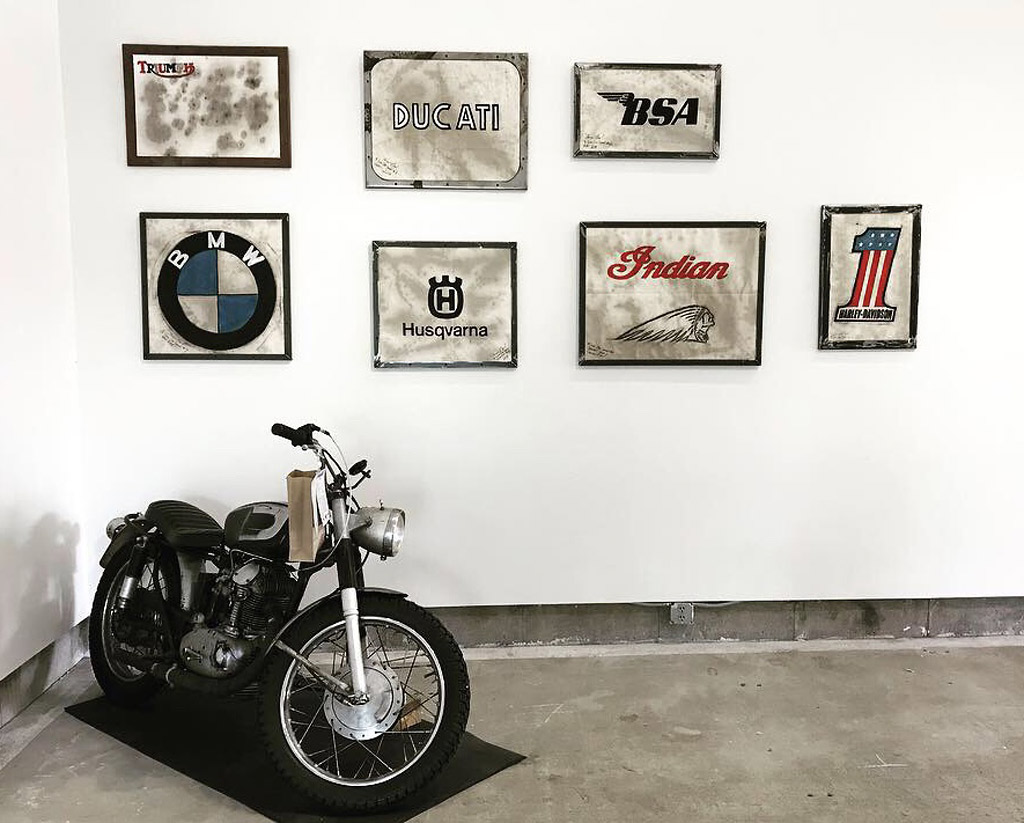
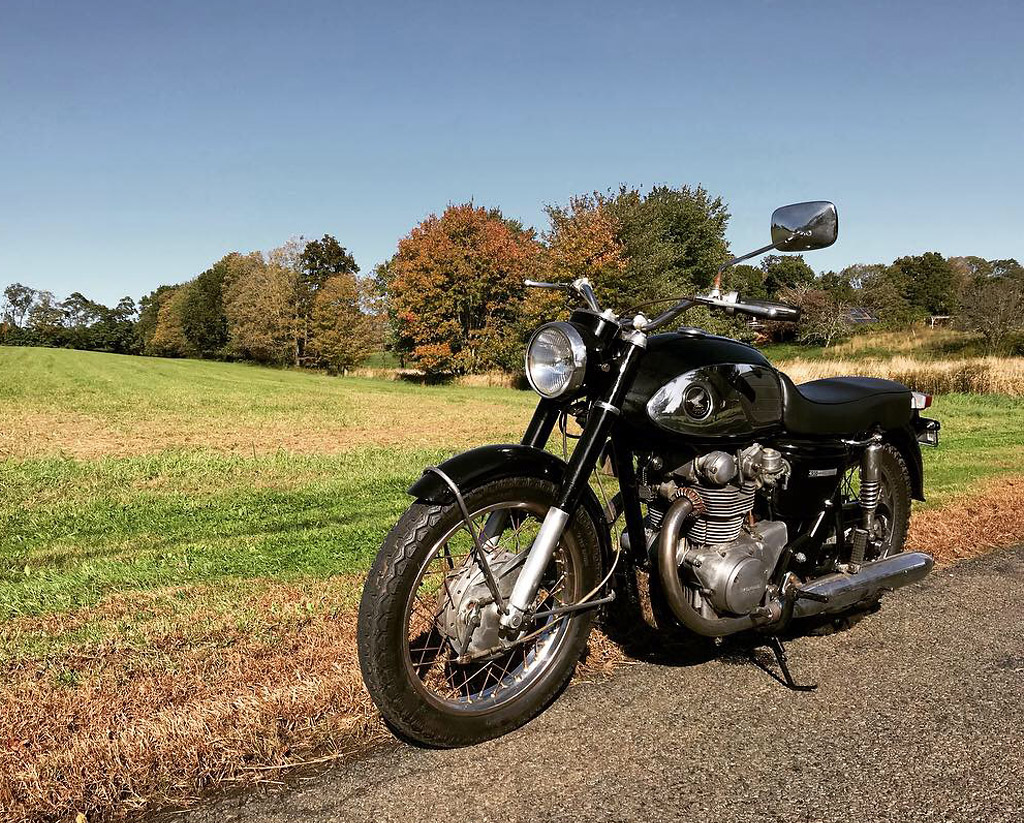
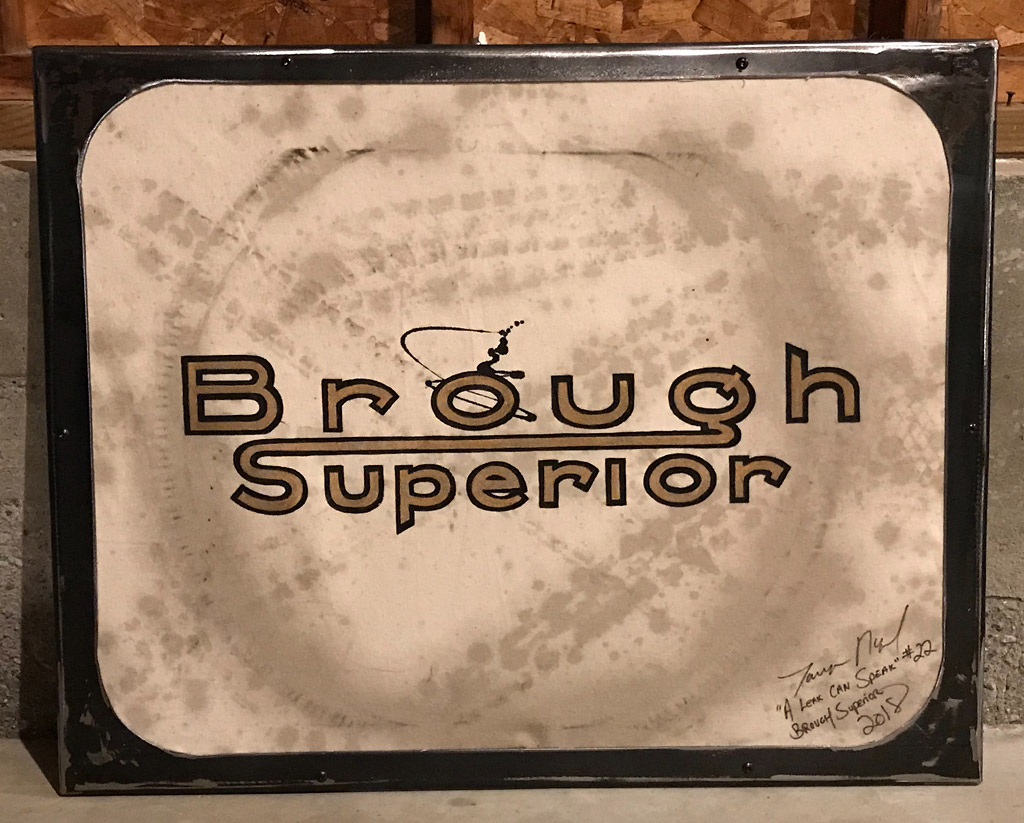
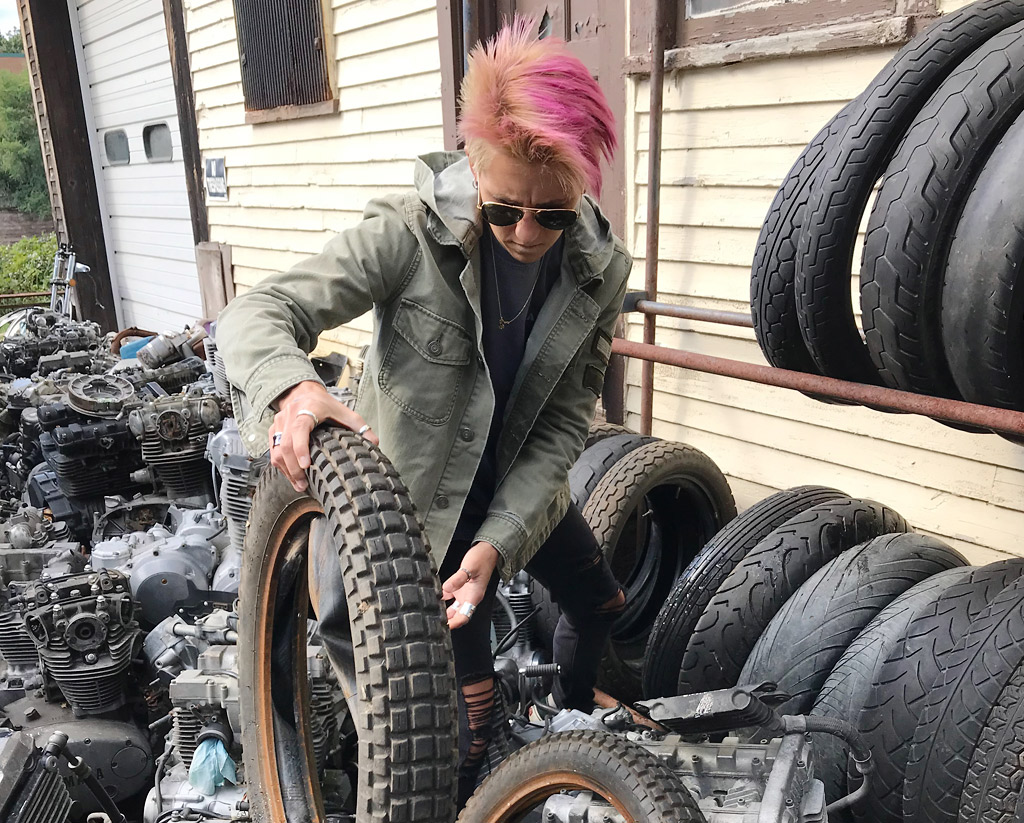
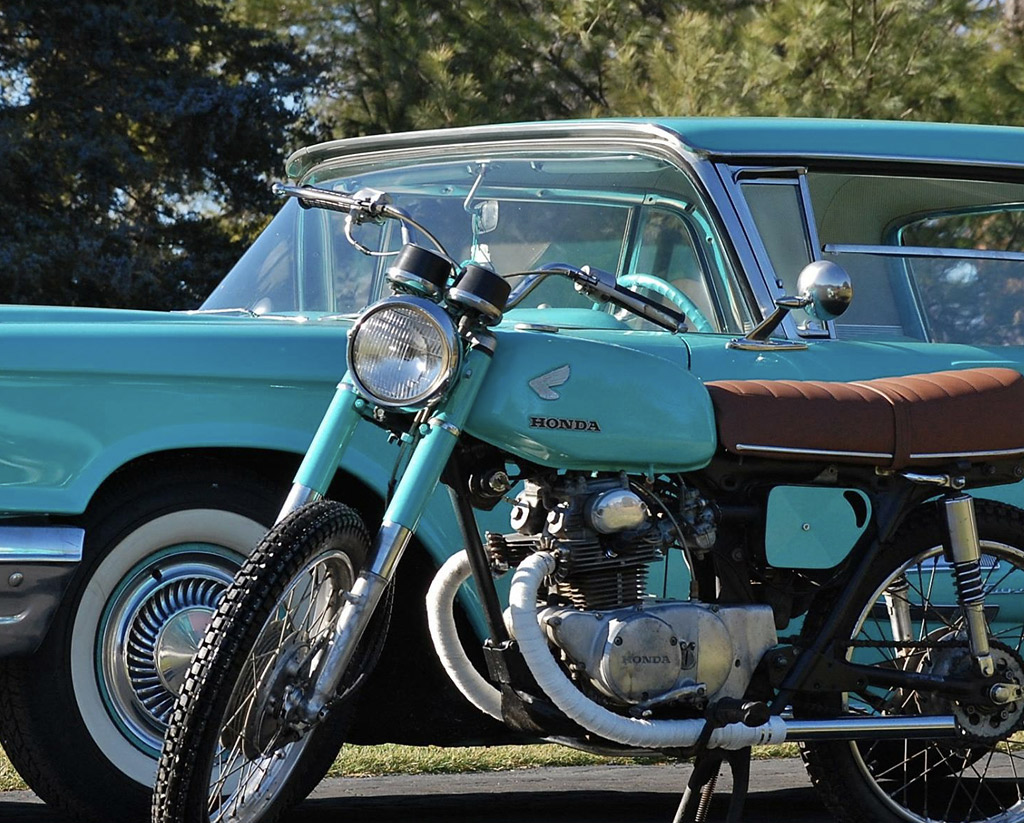
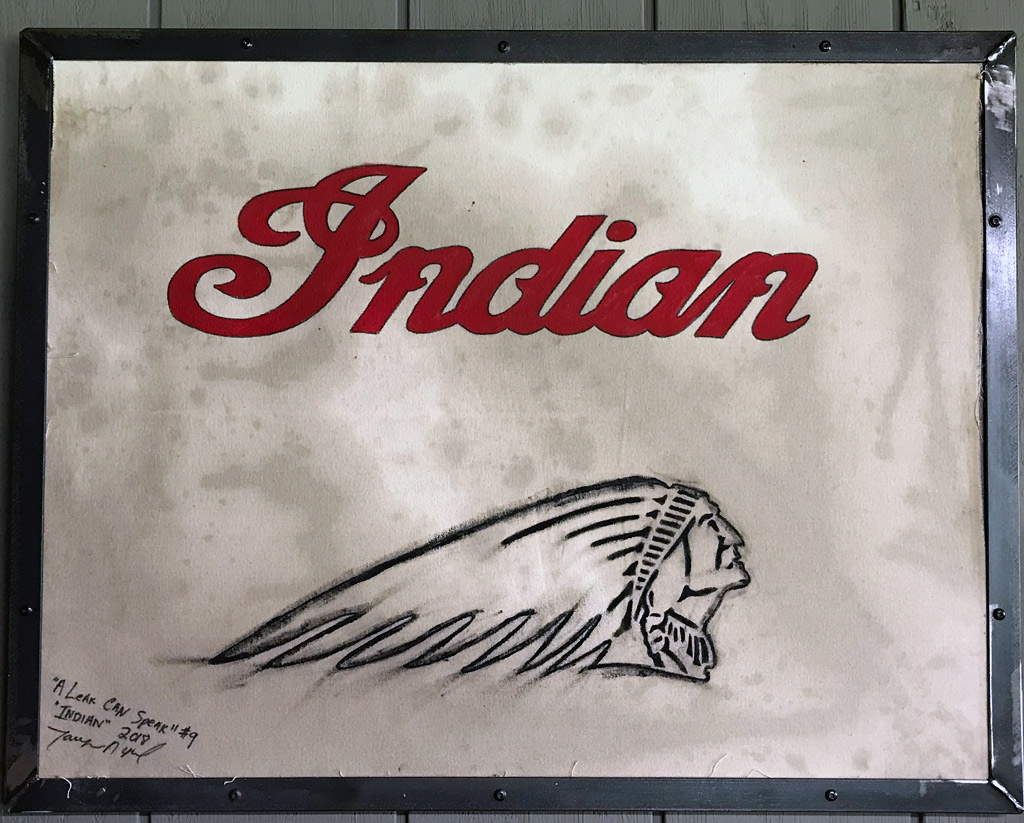
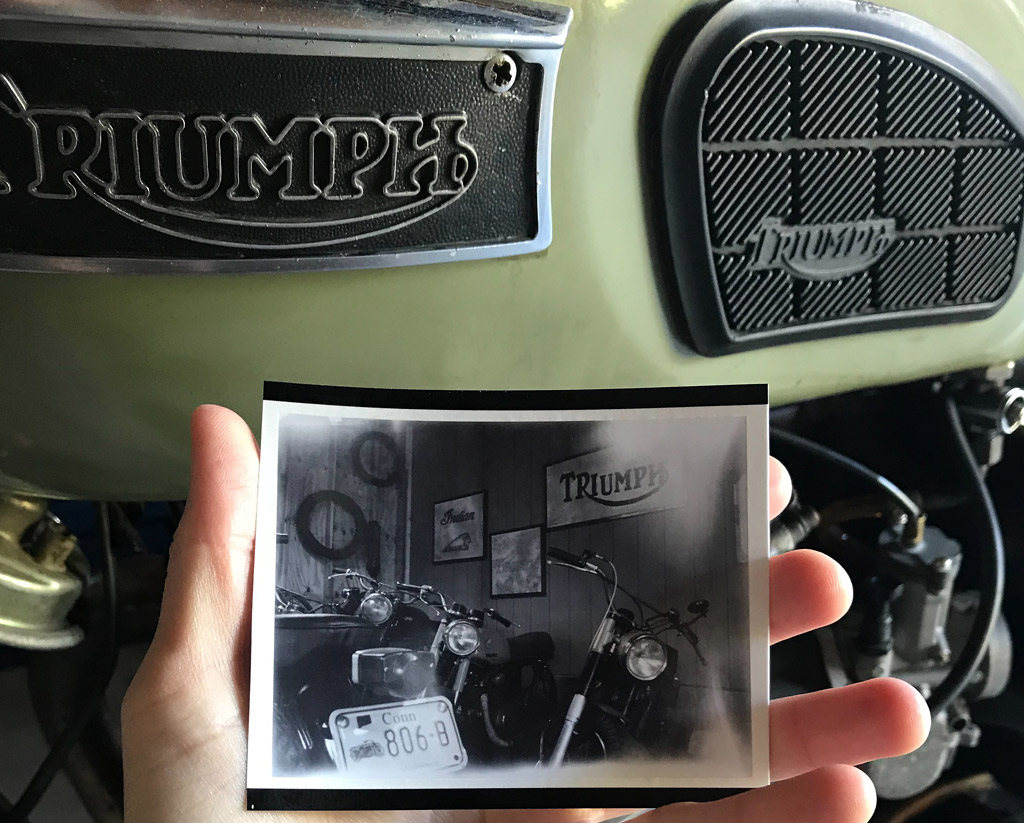
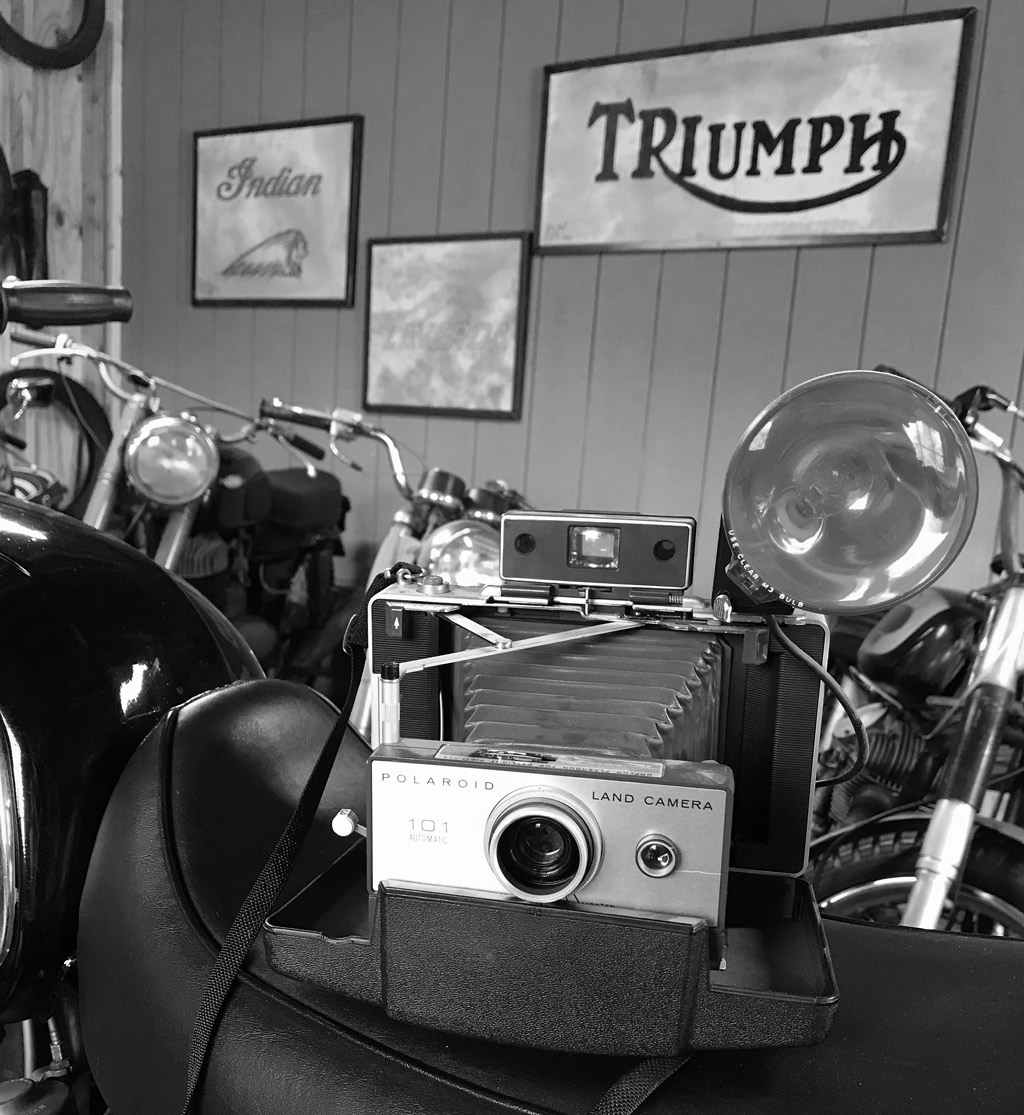
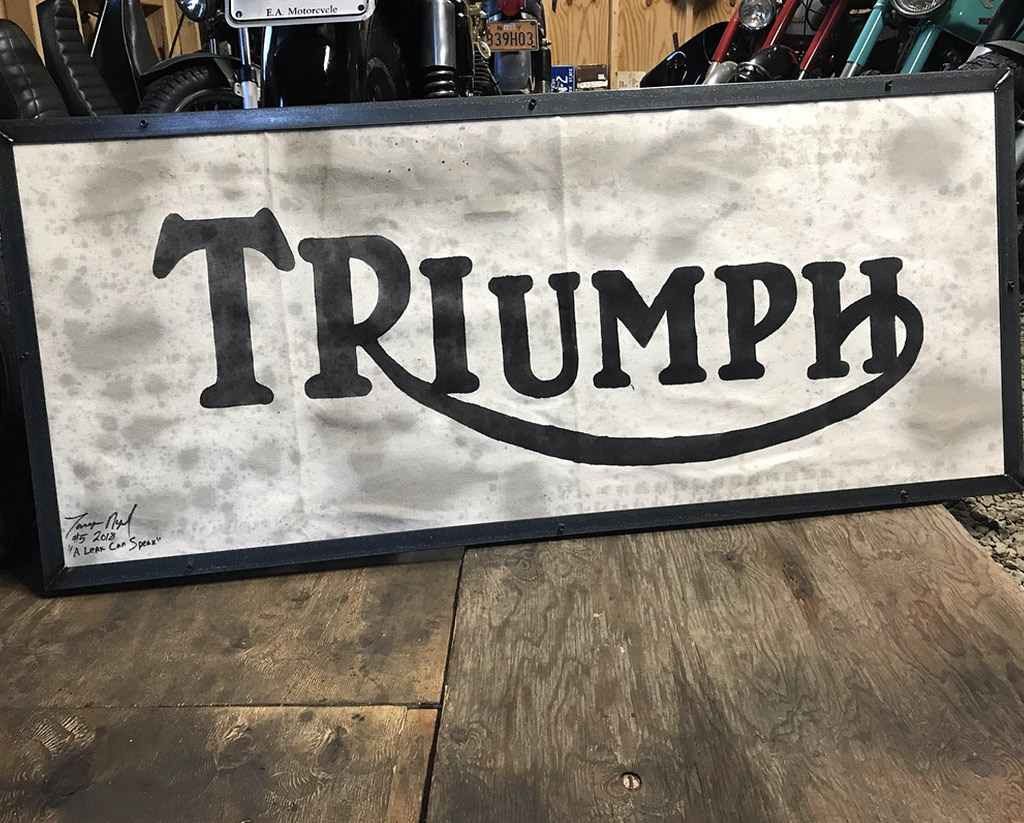


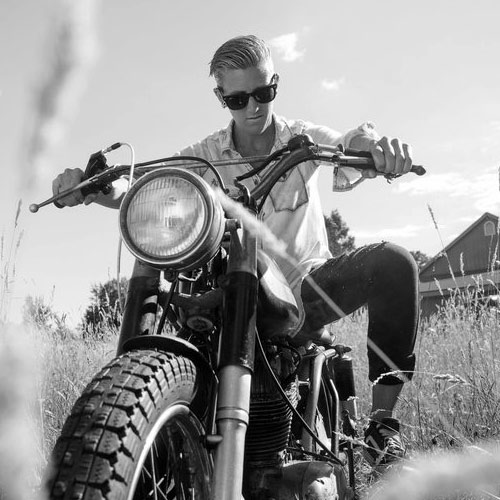
Leave a Comment